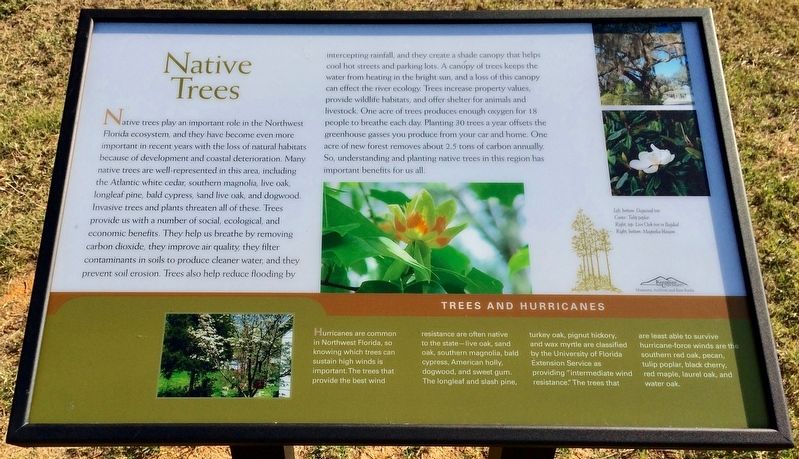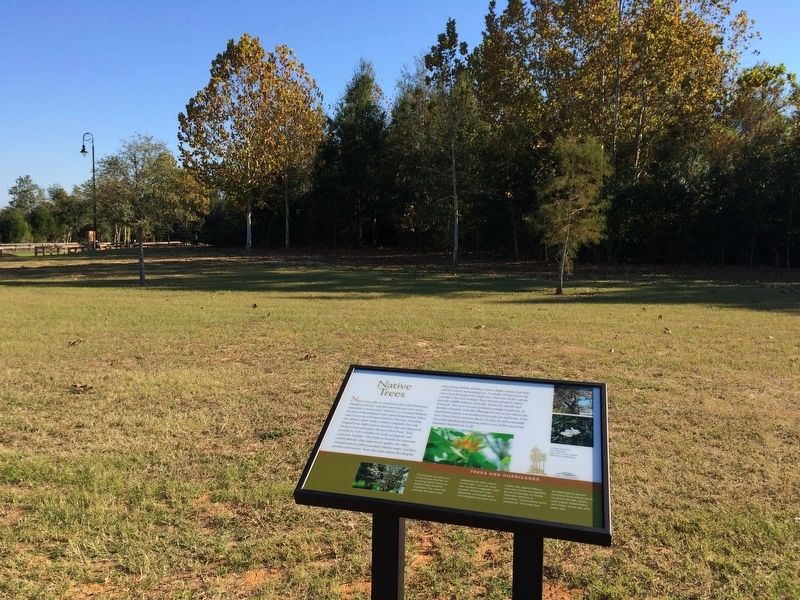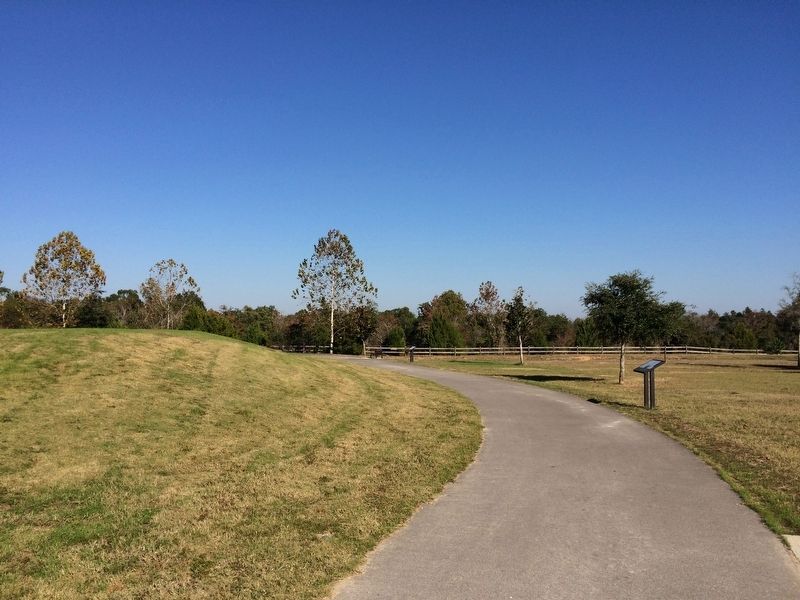Bagdad in Santa Rosa County, Florida — The American South (South Atlantic)
Native Trees
Native trees play an important role in the Northwest Florida ecosystem, and they have become even more important in recent years with the loss of natural habitats because of development and coastal deterioration. Many native trees are well-represented in this area, including the Atlantic white cedar, southern magnolia, live oak, longleaf pine, bald cypress, sand live oak, and dogwood. Invasive trees and plants threaten all of these. Trees provide us with a number of social, ecological, and economic benefits. They help us breathe by removing carbon dioxide, they improve air quality they filter contaminants in soils to produce cleaner water, and they prevent soil erosion. Trees also help reduce flooding by intercepting rainfall, and they create a shade canopy that helps cool hot streets and parking lots. A canopy of trees keeps the water from heating in the bright sun, and a loss of this canopy can effect the river ecology. Trees increase property values, provide wildlife habitats, and offer shelter for animals and livestock. One acre of trees produces enough oxygen for 18 people to breathe each day. Planting 30 trees a year offsets the greenhouse gasses you produce from your car and home. One acre of new forest removes about 2.5 tons of carbon annually. So, understanding and planting native trees in this region has important benefits for us all.
Trees and Hurricanes
Hurricanes are common in Northwest Florida, so knowing which trees can sustain high winds is important. The trees that provide the best wind resistance are often native to the state—oak, sand oak, southern magnolia, bald cypress, American holly, dogwood, and sweet gum. The longleaf and slash pine, turkey oak, pignut hickory, and wax myrtle are classified by the University of Florida Extension Service as providing "intermediate wind resistance" The trees that are least able to survive hurricane-force winds are the southern red oak, pecan, tulip poplar, black cherry, red maple, laurel oak, and water oak.
Captions:
Left, bottom: Dogwood tree
Center: Tulip poplar
Right, top: Live Oak tree in Bagdad
Right,bottom: Magnolia blossom
Erected 2016 by Bagdad Waterfronts Florida Partnership, Inc.
Topics. This historical marker is listed in this topic list: Horticulture & Forestry.
Location. 30° 36.23′ N, 87° 1.906′ W. Marker is in Bagdad, Florida, in Santa Rosa County. Marker can be reached from Main Street, 0.1 miles east of Forsyth Street. Located within the Bagdad Mill Site Park. Touch for map. Marker is at or near this postal address: 6953 Main Street, Bagdad FL 32530, United States of America. Touch for directions.
Other nearby markers. At least 8 other markers are within walking distance of this marker. The Early History of Bagdad (within shouting distance of this marker); The Bagdad Mill Site (about 300 feet away, measured in a direct line); Civil War and Reconstruction in Northwest Florida (about 300 feet away); Shipbuilding in Bagdad (about 400 feet away); Bagdad Mill Site Park (about 400 feet away); The Skirmish on the Blackwater (about 400 feet away); A New Century (about 500 feet away); The Longleaf Pine (about 500 feet away). Touch for a list and map of all markers in Bagdad.
Credits. This page was last revised on June 20, 2018. It was originally submitted on December 8, 2016, by Mark Hilton of Montgomery, Alabama. This page has been viewed 290 times since then and 15 times this year. Photos: 1, 2, 3. submitted on December 8, 2016, by Mark Hilton of Montgomery, Alabama.


